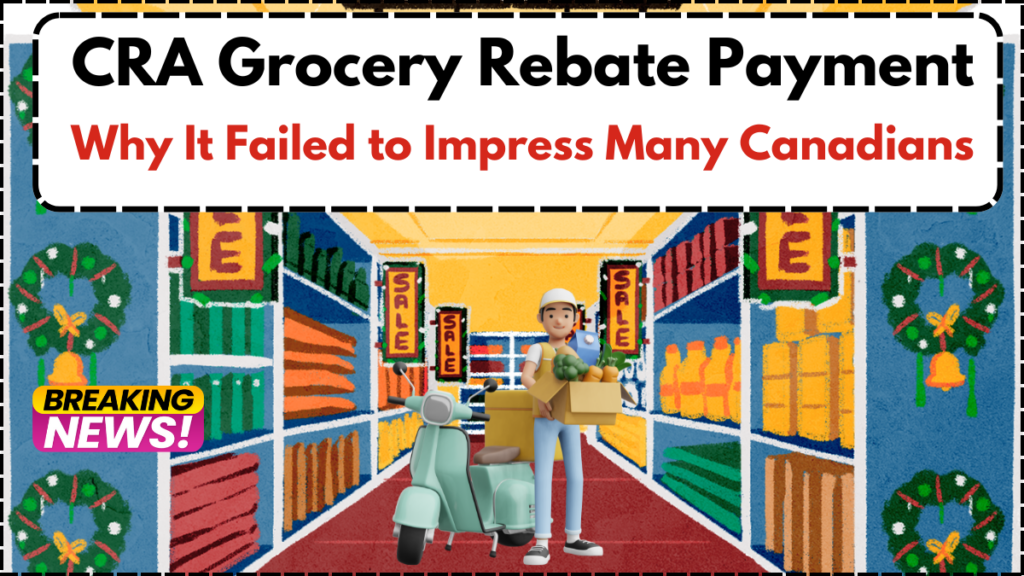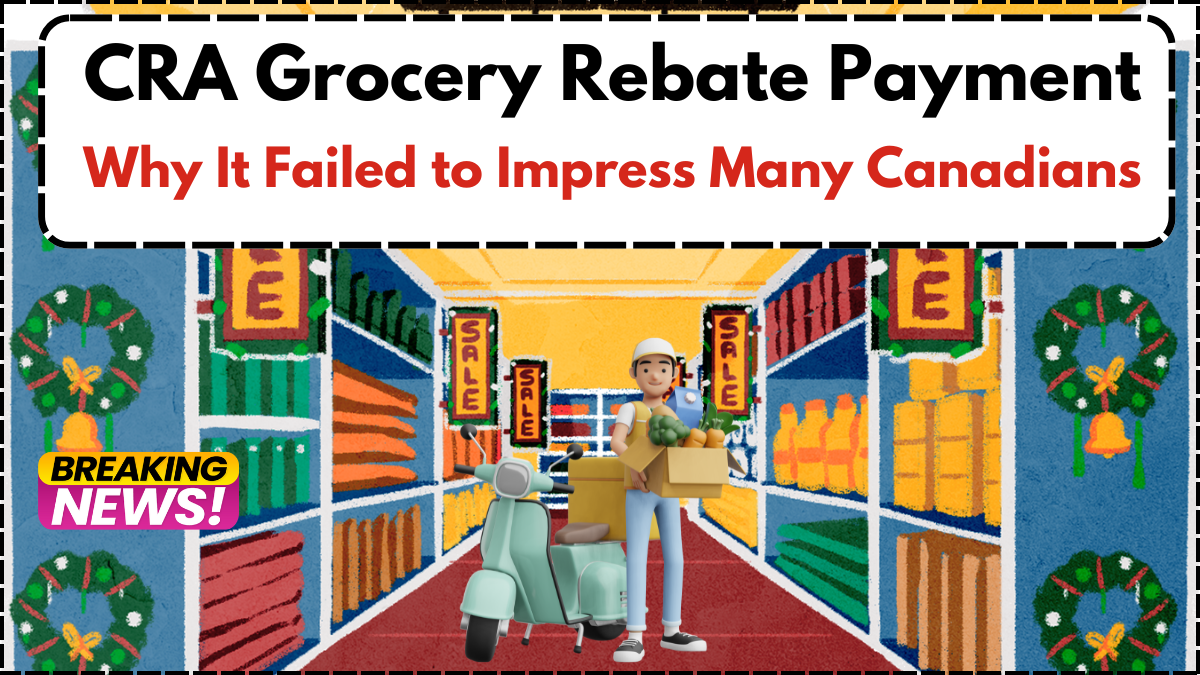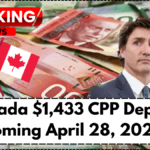As of April 2025, Canadians continue to wrestle with stubbornly high grocery prices and rising living expenses. While inflation has moderated slightly since its peak in 2023, essentials like food, rent, and utilities remain significantly more expensive than pre-pandemic levels. To ease the financial strain, especially on vulnerable populations, the federal government introduced a one-time Grocery Rebate — but how effective has it really been?

Overview of the Grocery Rebate Program
Launched as a short-term inflation relief measure, the Canada Grocery Rebate aimed to reach about 11 million low- and modest-income households. Funds were directly deposited into eligible Canadians’ bank accounts as a lump-sum payment.
While initially welcomed, many recipients now question whether this form of assistance truly meets their needs. For most, the relief is temporary, with no follow-up payments planned for the rest of 2025.
Real Voices: “It Helped — But It’s Not Enough”
Take Diane Lane, a senior living in Toronto. Her $200 rebate offered momentary relief — covering a grocery bill or two — but barely scratched the surface of her monthly budget. “It’s better than nothing,” she says, “but once it’s gone, I’m right back where I started.”
Her sentiment is echoed nationwide. Canadians across demographics express appreciation for the effort but frustration at its limitations. The rebate, while timely, does little to resolve long-term food insecurity or keep up with rising living costs in urban and rural areas alike.
Who Was Eligible for the Grocery Rebate?
Eligibility was determined based on 2023 income tax returns, with thresholds designed to target lower-income Canadians. Here’s how the rebate was structured:
| Household Type | Maximum Income to Qualify | Estimated Rebate Amount |
|---|---|---|
| Single (no children) | $49,166 | Up to $234 |
| Couple with no children | ~$65,000 | Varies |
| Family of four | $64,946 | Up to $467 |
| Seniors (single or couple) | Income-dependent | $225–$300+ |
Payments were phased out as income approached the cap, ensuring the largest benefit went to those with the least financial flexibility.
Why Critics Say It Misses the Mark
Despite good intentions, the program has drawn criticism from policy experts, economists, and social advocates.
-
One-Time Nature: There is no ongoing support attached to the rebate. Once the money is spent, there’s no cushion left.
-
Exclusion of the Working Poor: Households slightly above the income cutoff, especially dual-income families, often fall through the cracks.
-
Lack of Structural Reform: The rebate does not address the causes of food inflation or low wage growth.
Economic Perspectives: The Bigger Picture
Experts like Peter Dungan from the University of Toronto note that inflation relief measures, while helpful short-term, can complicate national efforts to cool the economy. Pumping money into households might indirectly boost consumer spending, making inflation stickier.
Meanwhile, advocates such as Derek Cook of the Canadian Poverty Institute and Jim Mulvale from the University of Manitoba argue for systemic solutions — including:
-
Raising social assistance rates
-
Implementing a universal basic income
-
Adjusting wages to match real inflation
They emphasize that without structural fixes, temporary relief won’t prevent recurring hardship.
Long-Term Policy Options Under Consideration
Several potential long-term strategies are now being debated:
-
Taxing Windfall Profits: Economists like Marc Lee propose a windfall tax on oil and gas companies to fund permanent relief programs.
-
Improving Retail Competition: Encouraging more competition among grocers could lower prices.
-
Expanding Support for Renters: Since rent consumes a large portion of low-income Canadians’ budgets, broadening housing aid may indirectly help with food affordability.
Conclusion: A First Step, But Not the Finish Line
The Canada Grocery Rebate provided temporary relief for millions, but in its current form, it fails to deliver sustained financial security. It’s clear from the 2025 landscape that while one-time payments offer brief reprieve, they do not replace the need for lasting, policy-driven economic reform.
Until government action shifts from reactive to proactive, Canadians — especially those in low-income brackets — will continue facing monthly trade-offs between basic needs.
FAQs About the Canada Grocery Rebate 2025
Who received the 2025 Grocery Rebate in Canada?
Eligible Canadians included individuals and families earning under a certain threshold based on their 2023 income tax returns. Approximately 11 million households qualified.
How much was the grocery rebate?
The amount varied by household type and income. Singles received up to $234, while a family of four could receive up to $467.
Is this a monthly or recurring payment?
No, the grocery rebate was a one-time payment issued in early 2025. There are currently no plans for additional rounds.
Why are some people critical of the rebate?
Many feel the payment amount is too low and too brief to make a lasting impact. Critics also point out that systemic changes are needed to address food affordability and wage stagnation.
Will there be another rebate later in 2025?
As of April 2025, the government has not announced plans for a second grocery rebate. Future support measures may depend on inflation trends and budget decisions.
For More Information Click Here
Pari is a passionate writer known for captivating stories that blend imagination and reality. Inspired by travel, history, and everyday moments, Pari crafts narratives that resonate deeply with readers.




